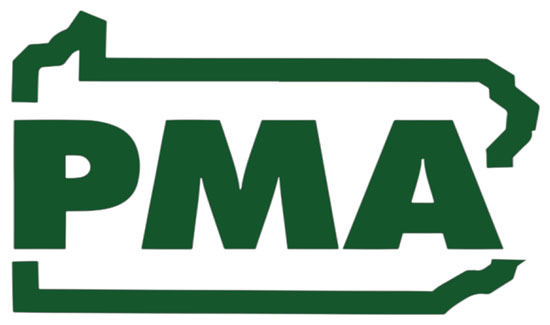TMI Bailout Would Wreck PA’s Competitive Energy Market

The nuclear industry in Pennsylvania finds itself begging for admission to the final phase of President Reagan’s description of how government imposes its will on business: “If it stops moving, subsidize it.” The first two stages, “If it moves, tax it, and if it keeps moving, regulate it,” are the setup to the sad punchline.
When entering into a competitive market for electricity more than twenty years ago, Pennsylvania’s nuclear industry was all for it. Not only would those businesses get to collect billions of extra dollars in surcharges from ratepayers during the transition, the nuclear companies also expected to thrive as low-cost producers in the new marketplace.
Of course, free enterprise succeeds because markets are dynamic and competitors must continue to adapt if they are to survive. When hydraulic fracturing and horizontal drilling brought to market trillions of cubic feet of natural gas from the Marcellus Shale formation, the nuclear industry was not prepared to compete and has failed to adapt.
The nuclear industry’s response to more robust competition has been to run to government for some sort of subsidy (it will be given a more palatable label) to force ratepayers and/or taxpayers to keep padding their bottom line. At the end of November, the Nuclear Energy Caucus delivered to their legislative colleagues and Governor Tom Wolf a 42-page rationale along these lines – with talk of “zero emissions” (never mind the plutonium) and saving local jobs.
Also conveniently omitted is the big break the industry already got on the front end of the deal, when in 1996 Governor Tom Ridge signed the Electricity Generation Customer Choice and Competition Act. Ratepayers forked over billions in transitional, or stranded, capital costs to compensate the nuclear industry for the value of their reactors.
Another subsidy now would undermine the very premise of the competitive energy market and threaten its achievements, according to Glen Thomas, who as past chairman of the Public Utility Commission oversaw the restructuring of the markets.
“The benefits from a competitive market have been across the board from lower energy prices to more choice for consumers to plummeting emissions,” said Thomas, now the president of GT Power Group in Malvern. “This would go against everything we worked for.”
David N. Taylor, President & CEO of the PMA emphasized the importance of competitive energy markets to Pennsylvania’s manufacturing sector. “Manufacturing drives Pennsylvania’s economy and, no matter what they’re making, manufacturers need energy — and lots of it,” Taylor said. “Affordable energy has been and must remain a competitive advantage for Pennsylvania. The General Assembly should protect consumers by defending market competition for electricity and all of the electricity generators should continue to undergo the rigor of the competitive market.”
Taylor noted that new electric generation capacity continues to come online and pointed to a natural gas fired plant that just opened in Jessup, near Scranton, as an exemplar for what’s going on in the industry.
With 30 employees, the plant has the capacity to generate twice the power of Exelon’s TMI. That plant requires 600 employees to run.
In addition, the new plant’s owner, Invenergy, says it will generate more than $50 million in revenue for Jessup over the life of the project.
“With its highly-efficient design and operational flexibility, Lackawanna Energy Center is expected to displace generation from older, dirtier units in the PJM Interconnection, the largest organized power market in the U.S.,” the company said in a statement.
Invenergy is far from the only energy investor attracted to a competitive market. In the PJM grid, the nation’s largest wholesale power grid in all or parts of 13 states and the District of Columbia, 26 gas-fired plants are under construction or being upgraded.
One of the ways the nuclear industry is trying to keep up is through the creation of government-mandated, zero [carbon] emission credit (ZEC) programs. Under ZEC, coal and natural gas generators must buy a certain number of credits from nuclear facilities that produce zero-emissions electricity. The programs, in effect, allow subsidized generators to bid below cost in power market auctions, putting other generators at a competitive disadvantage.
Last year, the Illinois General Assembly fast-tracked ZEC legislation to the tune of $235 million a year in ratepayer-funded subsidies. New York, New Jersey and Connecticut have recently passed similar laws. Pennsylvania is next in the industry’s crosshairs, and time is running out. Exelon Corp. and FirstEnergy Corp. have said that without state or federal policy reforms they would close the Three Mile Island Generating Station (TMI) and the Beaver Valley Power Station in Pennsylvania by 2021.
But as “No Nuke Bailout PA” notes, a bailout of the nuclear industry does not guarantee that TMI (online since 1974) will continue to operate, even as the negative effect of higher energy costs from a bailout would have a major negative impact on all energy users, including senior citizens, small businesses, and manufacturers.
“The decision to close TMI is a direct result of Exelon’s failure to adapt to the changing market conditions after the nuclear industry received nearly $9 billion from ratepayers for transitional costs to prepare for Pennsylvania moving to a competitive electricity market,” a statement from the group said.
The rigor of market competition requires continuous improvement to succeed, and, as Glen Thomas points out, consumers have a lot to lose by giving that up. Pennsylvania’s energy costs used to run 15 percent higher than the national average before competition. Now they are consistently at or below average. Pennsylvania has a 29 percent reserve margin where 16 percent is considered good. Emissions of carbon dioxide (CO2), nitrogen oxides (NOx), and sulfur dioxide (SO2) have dropped precipitously under competition with the introduction of more efficient, cleaner burning plants.
Competition is working, and – having completed the decades-long, multibillion-dollar transition to a competitive marketplace for electricity – Pennsylvania should never look back.







